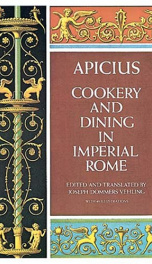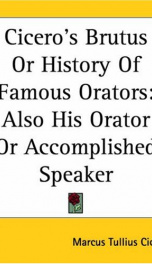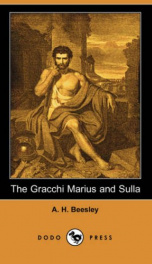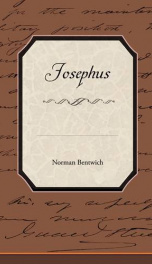Ammianus Marcellinus

Ammianus Marcellinus (325/330–after 391) was a fourth-century Roman historian. His is the second-to-last major historical account written during Antiquity (the last was written by Procopius). His work chronicled in Latin the history of Rome from 96 to 378, although only the sections covering the period 353–378 are extant.[1] Ammianus was born between 325 and 330 in the Greek-speaking East,[2][1], possibly at Antioch.[3] The surviving books of his history, the 'Res Gestae', cover the years 353 to 378.[4] Ammianus served as a soldier in the army of Constantius II in Gaul and Persia. He was "a former soldier and a Greek" (miles quondam et graecus),[5] he tells us, and his enrolment among the elite protectores domestici (household guards) shows that he was of noble birth. He entered the army at an early age, when Constantius II was emperor of the East, and was sent to serve under Ursicinus, governor of Nisibis in Mesopotamia, and magister militum. He returned to Italy with Ursicinus, when he was recalled by Constantius, and accompanied him on the expedition against Silvanus the Frank, who had been forced by the allegedly unjust accusations of his enemies into proclaiming himself emperor in Gaul. With Ursicinus he went twice to the East. On one occasion he was separated from Ursicinus and took refuge in Amida (modern Diyarbakır) which was thereupon besieged by the Sassanid king Shapur II; he barely escaped with his life.[6] When Ursicinus lost his office and the favour of Constantius, Ammianus seems to have shared his downfall; but under Julian, Constantius's successor, he regained his position. He accompanied this emperor, for whom he expresses enthusiastic admiration, in his campaigns against the Alamanni and the Sassanids; after the death of Julian, he took part in the retreat of Jovian as far as Antioch, where he was residing when the conspiracy of Theodorus (371) was discovered and cruelly put down. At Rome, he wrote in Latin a history of the Roman empire from the accession of Nerva (96) to the death of Valens at the Battle of Adrianople (378),[7] in effect writing a continuation of the history of Tacitus. He presumably completed the work before 391, since at 22.16.12 he praises the Serapeum in Egypt as the glory of the empire, and the temple was destroyed by Christians at the end of that year. Res Gestae Libri XXXI was originally in thirty-one books, but the first thirteen are lost (Barnes argues that the original was actually thirty-six books, which would mean that nineteen books had been lost). The surviving eighteen books cover the period from 353 to 378. As a whole it has been considered extremely valuable, being a clear, comprehensive and in general impartial account of events by a contemporary. Like many ancient historians, Ammianus had a strong political and religious agenda to pursue, however, and he contrasted Constantius II with Julian to the former's constant disadvantage; like all ancient writers he was skilled in rhetoric, and this shows in his work. Edward Gibbon judged Ammianus "an accurate and faithful guide, who composed the history of his own times without indulging the prejudices and passions which usually affect the mind of a contemporary."[8] But he also condemned Ammianus for lack of literary flair: "The coarse and undistinguishing pencil of Ammianus has delineated his bloody figures with tedious and disgusting accuracy."[9] Ernst Stein praised Ammianus as "the greatest literary genius that the world produced between Tacitus and Dante".[10] According to Kimberly Kagan, his accounts of battles emphasize the experience of the soldiers but at the cost of ignoring the bigger picture. As a result it is difficult for the reader to understand why the battles he describes had the outcome they did.[11] Scholars have often believed that Ammianus' work was intended for public recitation for two reasons: the overwhelming presence of accentual clausulae, which implies that it was intended to be read aloud; and epistle 1063 of Libanius to a Marcellinus of Rome which refers to public recitations. However, virtually all major works of Greek and Latin prose possessed such clausulae; and some scholars have rejected the identification of Libanius' Marcellinus with Ammianus, since Marcellinus was a very common name and the tone suggests Libanius was addressing a man much younger than himself (Ammianus was his contemporary). It is a striking fact that Ammianus, though a professional soldier, gives excellent pictures of social and economic problems, and in his attitude to the non-Roman peoples of the empire he is far more broad-minded than writers like Livy and Tacitus; his digressions on the various countries he had visited are particularly interesting. Ammianus' work contains a detailed description of the tsunami in Alexandria which devastated the metropolis and the shores of the eastern Mediterranean on 21 July 365. His report describes accurately the characteristic sequence of earthquake, retreat of the sea and sudden giant wave.[12] His work has suffered terribly from the manuscript transmission. Aside from the loss of the first thirteen books, the remaining eighteen are in many places corrupt and lacunose. The sole surviving manuscript from which almost every other is derived is a ninth-century Carolingian text, V, produced in Fulda from an insular exemplar. The only independent textual source for Ammianus lies in M, another ninth-century Frankish codex which was, unfortunately, unbound and placed in other codices during the fifteenth century. Only six leaves of M survive; however, the printed edition of Gelenius (G) is considered to be based on M, making it an important witness to the textual tradition of the Res Gestae.[13]
do you like this author?
What readers are saying
What do you think? Write your own comment on this book!
write a commentWhat readers are saying
What do you think? Write your own comment on this author!
write a commentBook list

The Roman History of Ammianus Marcellinus
During the Reigns of the Emperors Constantius,Julian,Jovianus,Valentinian,and Valens
Series:
Unknown
Year:
Unknown
Raiting:
4/5
Show more
add to favoritesadd In favorites
![Ammien Marcellin, Jornandès, Frontin (Les Stratagèmes), Végèce, Modestus ; avec la traduction en français [et] publiés sous la direction de M. Nisard_cover](https://files.onread.com/727214/thumbs/152x264/ammien-marcellin-jornandes-frontin-les-stratagemes-vegece-modestus-avec-la-traduction-en-francais-et-publies-sous-la-direction-de-m-n.jpg)
Ammien Marcellin, Jornandès, Frontin (Les Stratagèmes), Végèce, Modestus ; avec la traduction en français [et] publiés sous la direction de M. Nisard
Series:
Unknown
Year:
Unknown
Raiting:
2.5/5
Includes indexes Histoire / Ammien Marcellin -- Histoire des Goths / Jornandès -- Stratagèmes / Frontin -- Prècis des termes de la milice / Modestus -- Institutions militaires / Végèce 26
Show more
add to favoritesadd In favorites

Ammianus Marcellinus, with an English translation by John C. Rolfe 1
Series:
Unknown
Year:
Unknown
Raiting:
3.5/5
26 29
Show more
add to favoritesadd In favorites
Book list

The Roman History of Ammianus Marcellinus
During the Reigns of the Emperors Constantius,Julian,Jovianus,Valentinian,and Valens
Series:
Unknown
Year:
Unknown
Raiting:
4/5
Show more
add to favoritesadd In favorites
![Ammien Marcellin, Jornandès, Frontin (Les Stratagèmes), Végèce, Modestus ; avec la traduction en français [et] publiés sous la direction de M. Nisard_cover](https://files.onread.com/727214/thumbs/152x264/ammien-marcellin-jornandes-frontin-les-stratagemes-vegece-modestus-avec-la-traduction-en-francais-et-publies-sous-la-direction-de-m-n.jpg)
Ammien Marcellin, Jornandès, Frontin (Les Stratagèmes), Végèce, Modestus ; avec la traduction en français [et] publiés sous la direction de M. Nisard
Series:
Unknown
Year:
Unknown
Raiting:
2.5/5
Includes indexes Histoire / Ammien Marcellin -- Histoire des Goths / Jornandès -- Stratagèmes / Frontin -- Prècis des termes de la milice / Modestus -- Institutions militaires / Végèce 26
Show more
add to favoritesadd In favorites

Ammianus Marcellinus, with an English translation by John C. Rolfe 1
Series:
Unknown
Year:
Unknown
Raiting:
3.5/5
26 29
Show more
add to favoritesadd In favorites

Rerum gestarum libri qui supersunt; recensuit notisque selectis instruxit 5. Gardthausen 01
Series:
Unknown
Year:
Unknown
Raiting:
3/5
26
Show more
add to favoritesadd In favorites
![Ammiani Marcellini Quae supersunt. Cum notis integris Frid. Lindenbrogii [et al.] quibus Thom. Reinesii quasdam et suas adiecit Io. Augustin. Wagner. Editionem absolvit Car. Gottlob Aug. Erfurdt 01_cover](https://files.onread.com/679297/thumbs/152x264/ammiani-marcellini-quae-supersunt-cum-notis-integris-frid-lindenbrogii-et-al-quibus-thom-reinesii-quasdam-et-suas-adiecit-io-augustin-wagner.jpg)
Ammiani Marcellini Quae supersunt. Cum notis integris Frid. Lindenbrogii [et al.] quibus Thom. Reinesii quasdam et suas adiecit Io. Augustin. Wagner. Editionem absolvit Car. Gottlob Aug. Erfurdt 01
Series:
Unknown
Year:
Unknown
Raiting:
4/5
26
Show more
add to favoritesadd In favorites

Rerum gestarum qui de 31 supersunt Libri 18, ad optimas editiones collati; praemittitur notitia literaria accedunt indices Studiis Societatis Bipontinae
Series:
Unknown
Year:
Unknown
Raiting:
3/5
26
Show more
add to favoritesadd In favorites

Ammiani Marcellini Quae supersunt. Accedunt auctoris ignoti de imperatoribus excerpta. Ad optimorum librorum fidem accurate edita. Editio stereotypa C. Tauchnitiana
Series:
Unknown
Year:
Unknown
Raiting:
4.5/5
26
Show more
add to favoritesadd In favorites
![Ammiani Marcellini Quae supersunt. Cum notis integris Frid. Lindenbrogii [et al.] quibus Thom. Reinesii quasdam et suas adiecit Io. Augustin. Wagner. Editionem absolvit Car. Gottlob Aug. Erfurdt 3_cover](https://files.onread.com/634309/thumbs/152x264/ammiani-marcellini-quae-supersunt-cum-notis-integris-frid-lindenbrogii-et-al-quibus-thom-reinesii-quasdam-et-suas-adiecit-io-augustin-wagner.jpg)
Ammiani Marcellini Quae supersunt. Cum notis integris Frid. Lindenbrogii [et al.] quibus Thom. Reinesii quasdam et suas adiecit Io. Augustin. Wagner. Editionem absolvit Car. Gottlob Aug. Erfurdt 3
Series:
Unknown
Year:
Unknown
Raiting:
4/5
45 52
Show more
add to favoritesadd In favorites
![Ammiani Marcellini Quae supersunt. Cum notis integris Frid. Lindenbrogii [et al.] quibus Thom. Reinesii quasdam et suas adiecit Io. Augustin. Wagner. Editionem absolvit Car. Gottlob Aug. Erfurdt 2_cover](https://files.onread.com/634287/thumbs/152x264/ammiani-marcellini-quae-supersunt-cum-notis-integris-frid-lindenbrogii-et-al-quibus-thom-reinesii-quasdam-et-suas-adiecit-io-augustin-wagner.jpg)
Ammiani Marcellini Quae supersunt. Cum notis integris Frid. Lindenbrogii [et al.] quibus Thom. Reinesii quasdam et suas adiecit Io. Augustin. Wagner. Editionem absolvit Car. Gottlob Aug. Erfurdt 2
Series:
Unknown
Year:
Unknown
Raiting:
4.5/5
45 52
Show more
add to favoritesadd In favorites

The Roman History of Ammianus Marcellinus: During the Reigns of the Emperors Constantius, Julian ...
Series:
Unknown
Year:
Unknown
Raiting:
3/5
Book digitized by Google and uploaded to the Internet Archive by user tpb.
Show more
add to favoritesadd In favorites

Ammiani Marcellini Rerum gestarum libri qui supersunt. Recensuit notisque selectis instruxit V ...
Series:
Unknown
Year:
Unknown
Raiting:
4/5
Book digitized by Google from the library of Harvard University and uploaded to the Internet Archive by user tpb.
Show more
add to favoritesadd In favorites

Ammiani Marcellini Rerum gestarum libri
Series:
Unknown
Year:
Unknown
Raiting:
4/5
Book digitized by Google from the library of Harvard University and uploaded to the Internet Archive by user tpb.
Show more
add to favoritesadd In favorites

Ammien Marcellin: ou les dixhuit livres de son histoire qui nous ..., Volume 3
Series:
Unknown
Year:
Unknown
Raiting:
4.5/5
Book digitized by Google from the library of New York Public Library and uploaded to the Internet Archive by user tpb.
Show more
add to favoritesadd In favorites

The Roman history of Ammianus Marcellinus, during the reigns of the emperors Constantius, Julian, Jovianus, Valentinian, and Valens
Series:
Unknown
Year:
Unknown
Raiting:
3.5/5
Book digitized by Google from the library of University of Michigan and uploaded to the Internet Archive by user tpb. "The first thirteen books are lost."--p. [1]
Show more
add to favoritesadd In favorites
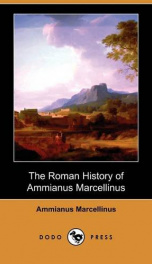
The Roman History of Ammianus Marcellinus
Series:
Unknown
Year:
Unknown
Raiting:
1/5
A work by a fourth-century Roman historian, Ammianus Marcellinus, whose work chronicled in Latin the history of Rome from 96 to 378. He is often called the last great historian of Rome, and his writings – one of the outstanding achievements of Latin language and literature. The FAmmianus’ work appears an eyewitness account, full of bright descriptions and ingenious emotion. The skill of the narrator, accuracy and truthfulness brought the author the fame of a respectable representative of Roman historical tradition, side by side with Titus Livius, Publius Cornelius Tacitus, and Gaius Suetonius Tranquillus. The author offers numerous details on Roman executive system and the events of social life of the time, tells of the state of affairs in the Empire, falling into decay, of the main Roman Enemies and personal qualities of the emperors. Their portraits are notable for vividness and depth. The authenticity of the information given by Ammianus has never been disputed, for he is considered to treat the sources critically and carefully. His work still remains a rich source of information concerning the political history.
Show more
add to favoritesadd In favorites
What readers are saying
What do you think? Write your own comment on this author!
write a commentif you like Ammianus Marcellinus try:
readers also enjoyed
What readers are saying
What do you think? Write your own comment on this author!
write a commentGenre
if you like Ammianus Marcellinus try:
readers also enjoyed
Do you want to read a book that interests you? It’s EASY!
Create an account and send a request for reading to other users on the Webpage of the book!








